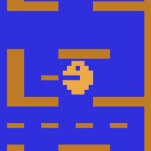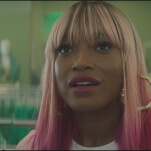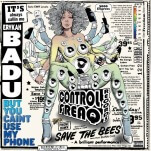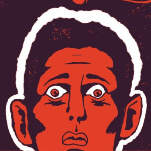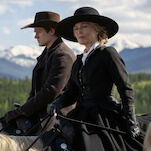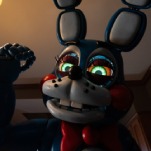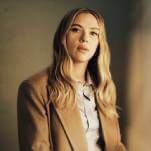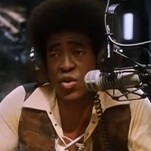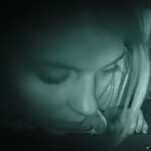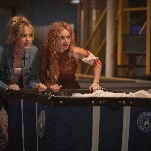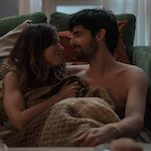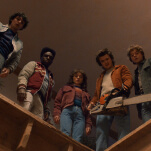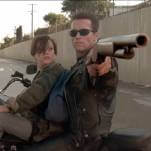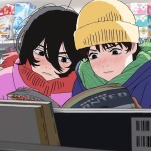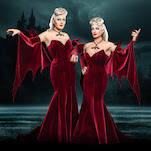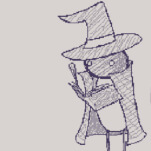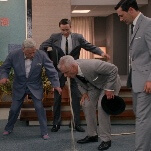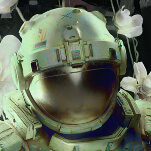The Muppet Show: “Episode 223: John Cleese”/“Episode 224: Cloris Leachman”
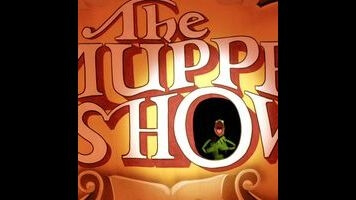
The Muppets’ flair for the comedically absurd has its roots in multiple sources: Sam And Friends borrowed liberally from the catalogues of Stan Freberg and Spike Jones; the characters’ skill with snappy wordplay falls somewhere between The Marx Brothers and Mel Brooks; the unsustainable anarchy of The Muppet Show: Sex And Violence has a precursor in the stream-of-consciousness flow of Monty Python’s Flying Circus. These debts are frequently acknowledged in Muppet productions, be it in Freberg popping by Sam And Friends to demand credit for the records played on the program, or Muppet Show bookings like alpha Python John Cleese or his predecessors in British silliness, The Goon Show alumni Peter Sellers and Spike Milligan.
Cleese’s personal sensibilities mesh so well with The Muppets, it’s a shame he’s the only Monty Python member to collaborate with the characters. (Though Terry Jones did write the first draft of the Labyrinth script, so Cleese isn’t the end of the Henson-Python connection.) At least Jim Henson got more than a great episode of The Muppet Show out of Cleese: The actor also turned in a splendid cameo in The Great Muppet Caper, playing the male half of the oblivious upper-crust couple whose home Miss Piggy passes off as her own.
In lieu of working with Cleese or his Python companions, the Sesame Street writers up and invented their own Flying Circus analogue in the early 1990s: Monty, an off-kilter, stiff-upper-lip type seemingly modeled after Cleese’s character from the “Ministry Of Silly Walks” sketch. He’s a fascinating bit player, a foil for straight-shooter Prairie Dawn used as a vehicle for teaching basic lessons in logic. In a neighborhood that’s home to single-minded monsters and an 8-foot-tall bird, it’s no easy feat portraying the guy in the sensible bowler hat as the most ridiculous of the bunch. But just as Monty Python’s Flying Circus did for high-school nerds and collegiate stoners in the ’70s (and Episode 223 of The Muppet Show did for their younger siblings), Monty taught the preschoolers of the ’90s the proper venues for the silly and the absurd.
Episode 223: John Cleese
“With our special guest star”: Like many installments of The Muppet Show’s second season, Episode 223 doesn’t break new ground for the series—it does, however, set a standard for future episodes to follow. John Cleese isn’t The Muppets’ first reluctant guest—that honor goes to Harvey Korman—but he’s the ideal reluctant guest, owing to a gift with comedic belligerence matched only by Bob Odenkirk. Cleese’s prickly persona does much of the heavy lifting on this hilarious Muppet Show, but his gifts as a writer are on display as well: As legend has it, the guest star gave an assist to Jerry Juhl on the episode’s fourth-wall-destroying script, which also has a splendid sense of anticipation and payoff. (The way Pigs In Space veers from space opera to kitchen-sink drama has the mark of Cleese all over it.) More than any other second-season guest, John Cleese truly bent The Muppet Show to serve his talents.
“The most sensational, inspirational, celebrational”: Wherever there are greatest-hits montages of Jim Henson’s television work, Cleese’s closing number—which is, in true Monty Pythonesque style, more of an anti-number—will be there. It’s a marvel of opposing forces coming together to make something extremely funny, with the incrementally displeased Cleese thrust into performances of increasing complexity. While negotiation is often the death of comedy, the tug-of-war between guest and host here succeeds because the momentum only moves in one direction; Cleese’s protestations do nothing to slow the scene, which pushes toward “The Impossible Dream” no matter what. Then again, what else would you suspect from one of the guys who struck comedic gold with Python’s “The Argument Sketch.”
“It’s like a kind of torture to have to watch the show”: Gonzo’s elongated right arm—the result of a cannonball-catching act gone awry—provides the basis for some of Episode 223’s most inspired silliness. However, it also gives rise to a flimsy runner that operates as if it’s made of spare parts from season one. Fozzie and Floyd’s running commentary on Gonzo’s affliction are by-the-numbers recurring jokes that don’t rise to the level of the half-hour’s stronger material.
“It’s time to play the music”: Most Muppet Show bands are overshadowed by Dr. Teeth And The Electric Mayhem, but Lubbock Lou And His Jughuggers at least put up a fight when it comes to challenging the good doctor and crew for the title of the series’ premier musical act. It helps that the members of the Jughuggers are given a touch of personality—with minimal speaking parts to boot. Take Bubba, the musician who puts the “jug” in “Jughuggers”: The character’s design—hair covering his eyes, beard down to his chest—position Bubba as the “quiet one” of the group. As such, when he opens his mouth on “Somebody Stole My Gal” and reveals himself as the source of the Jughugger’s vocal low end, it’s to extreme comedic effect.




